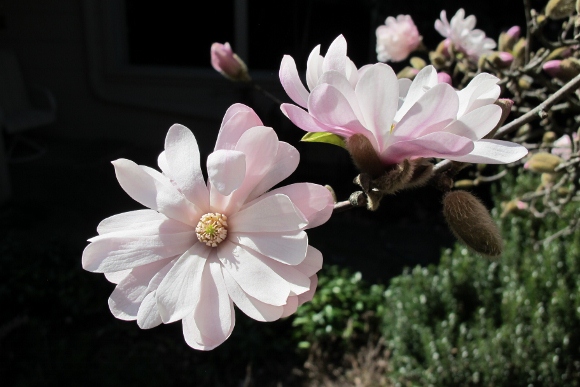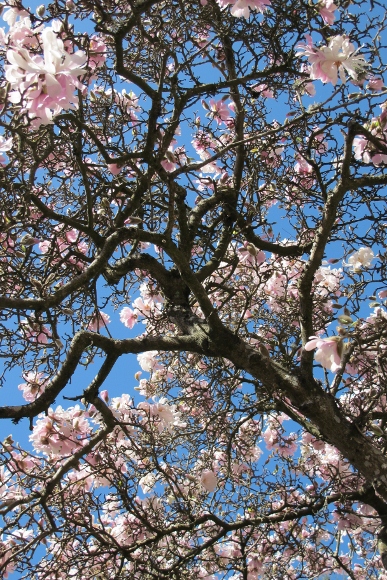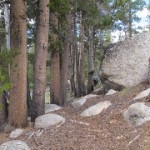
By Barbara Falconer Newhall
They emerge from mud, manure, leaf rot, earthworms, sow bugs. They take in water and sun. And here they are — with their intricate lines, dewy textures, and colors beyond naming. Also their precise, mathematically predetermined arrangements of sepals and petals. How do they do it?

A recent NOVA segment, “The Great Math Mystery,” suggests that maybe those blossoms, sticks and leaves growing out of the star magnolia tree in our front yard are no more real than so much digital code: creation is all math and no substance — no substance as we think we know it, anyway.
That could well be. It could be that, out in the garden standing under our decades-old magnolia tree, getting up close with a pretty pink blossom, maybe I’m witnessing a fibonacci number and not an actual swirl of petals.
But all that begs the deeper question — how in the world do earthworm castings become star magnolias?
It’s amazing. Is there a fibonacci number for amazement?
More floral amazement at “The De Young Is Bursting With Art — And Flowers.” More beauty at “Beauty — What to Do About It.”












